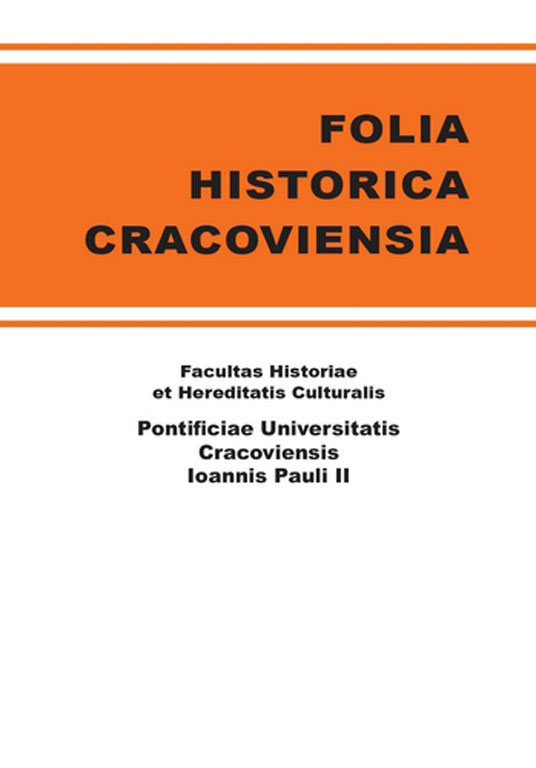Krakowscy pobożni laicy czy begardzcy heretycy? Z badań nad czternastowiecznym Tractatus contra beghardos Henryka Harrera
DOI:
https://doi.org/10.15633/fhc.214Słowa kluczowe:
Krakowscy pobożni laicy, begardzi, Tractatus contra beghardos, Henryk HarrerAbstrakt
Tractatus contra beghardos written by a Chech Dominican Henryk Harrer is a masterpiece of exceptional value for both historians of the medieval heterodox movements as well as for scholars interested in the history of theology and law in the 14th century. The treaty was commissioned by Cracow Dominicans in the years 1328 to 1334. Commissioning the treaty to Henryk Harrer, a stranger expert from the Prague monastery of St. Clemens was dictated by a series of controversies among Cracow clergy around the judgement of conduct of a certain group of people whose religious practices and a way of life stood out from the rest of the congregation. Undertaking the task of writing the treaty Henryk Harrer based his work around three charges pressed against the suspected of heresy: breaking off the Church and establishing an illegal organization (singularitas vite); corrupted attitude towards recognized religious practices (contemptibilitas sacramenti eucharistiae); numerous flaws and perverse disposition (pertinax voluntas). Not only did Harrer decide to comment on all aspects of life of central figures of Contra beghardos but he also honestly mentioned all arguments he was not able to undermine. Despite these objective difficulties, the Czech Dominican was certain that the expertise he came up with was sufficient to link the lay movement with the sect of Beghard Heretics.
The author of this study proved that, contrary to Harrer’s keen intention, his Tractatus contra beghardos does not unambiguously show heresy in the Cracow diocese. What is more, the reader, instead of indictment against the conduct of a group of laymen paradoxically received a confirmation of their innocence and orthodoxy. In the light of analysis of the text Contra beghardos, the claim that Beghard Heretics from Harrer’s work turn out to be pious layman, living in communion with the Church, seems to be fully substantiated. Of course their way of life and the practice of asceticism made them stand out from the other members of the congregation but were completely in line with the Church legislation. In this context, Harrer’s work is an original testimony of numerous misunderstandings about the Beghard movement and stormy times of forming a new kind of piety among lay members of Church.
Pobrania
Opublikowane
Numer
Dział
Licencja
Prawa autorskie (c) 2012 Tomasz Gałuszka

Praca jest udostępniana na licencji Creative Commons Attribution-NonCommercial-NoDerivatives 3.0 Unported License.
Autorzy publikujący w czasopiśmie udzielają jego wydawcy zgody o następującej treści:
- Autor zachowuje autorskie prawa majątkowe do utworu, a jednocześnie udziela wydawcy czasopisma zgody na jego pierwszą publikację w wersji drukowanej i wersji online na licencji Creative Commons Uznanie autorstwa 4.0 Międzynarodowe oraz zgody na wykonywanie opracowań, w tym przekładów.
- Autor ma możliwość udzielania zgody niewyłącznej na opublikowanie utworu w wersji, która ukazała się w czasopiśmie (np. zamieszczenia go w repozytorium instytucjonalnym lub opublikowania w książce), wraz z informacją o jego pierwszej publikacji w czasopiśmie.
- Autor może umieścić swój utwór online (np. w repozytorium instytucjonalnym lub na swojej stronie internetowej) jeszcze przed zgłoszeniem utworu do czasopisma.

